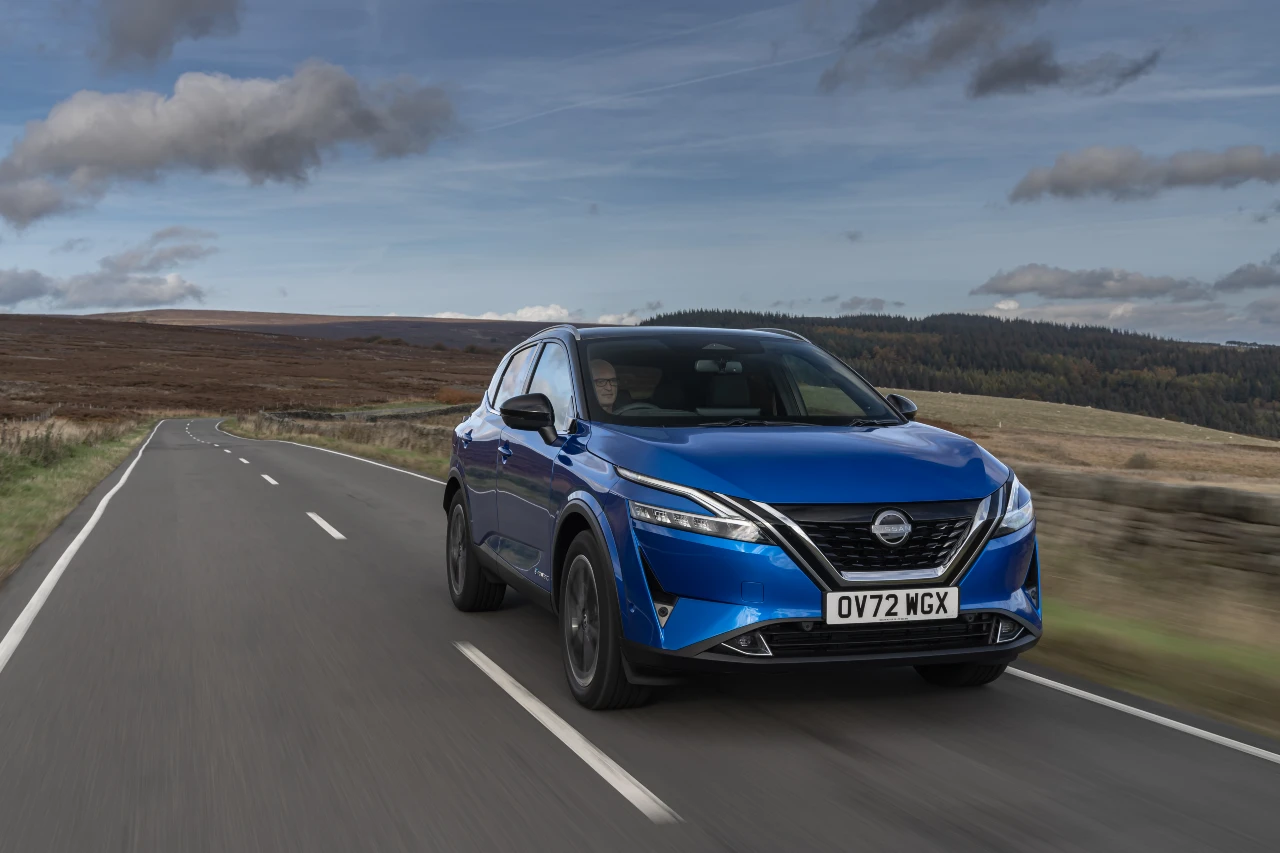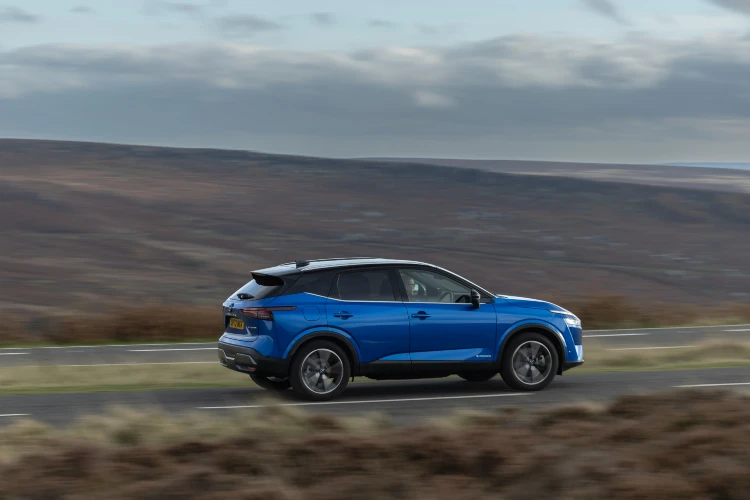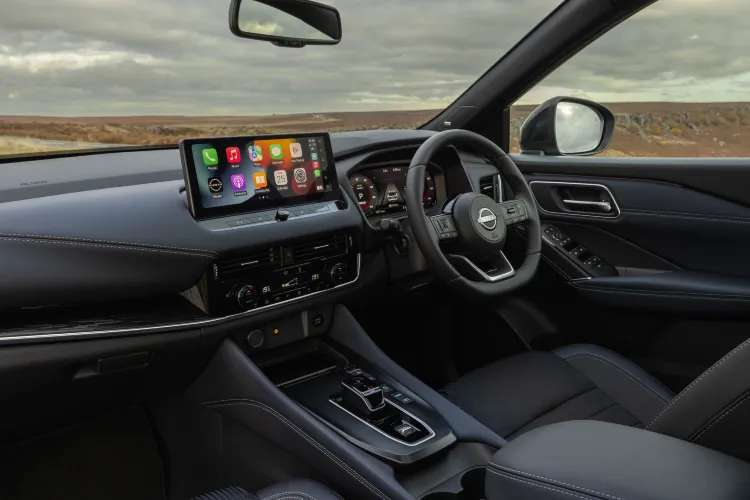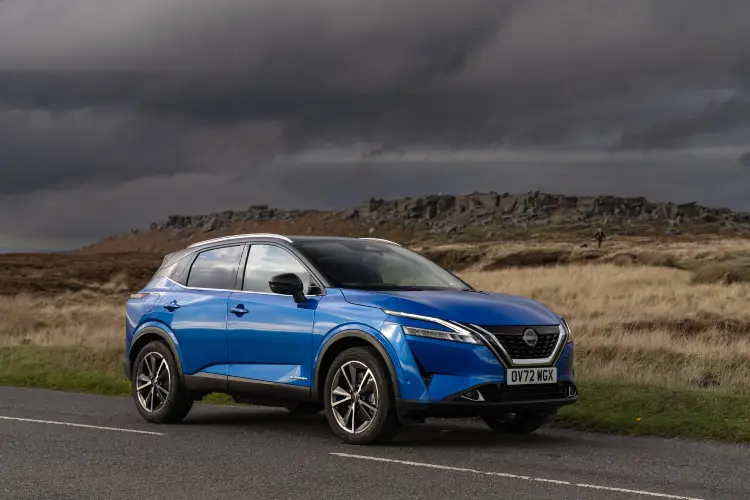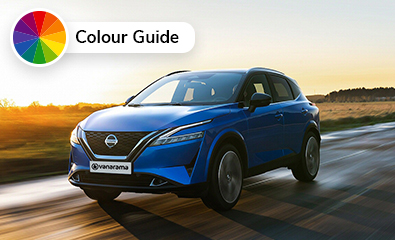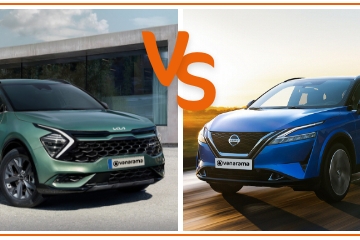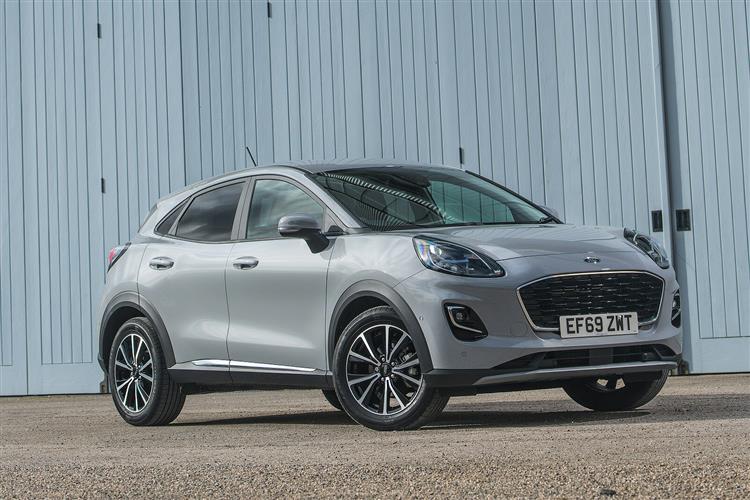By Mark Nichol
Very few cars need no introduction, but the Nissan Qashqai is one of them. And very few cars have a genuine claim to revolutionary status, but again, the Nissan Qashqai is one of them. It goes back to 2006, when Nissan first presented a slightly weird, slightly SUV looking thing at the Geneva Motor show, which would replace the slightly ordinary Almera family hatchback. Nobody really knew it at the time, but a new car genre was born – the ‘crossover-SUV’ genre – and the shape of family hatchbacks was changed forever. Literally.
Today’s Qashqai is the third-generation model and came in 2021 as arguably the victim of its own success. So popular were the first and second versions that, by then, pretty much every mainstream car company had its own take on the family crossover-SUV, with unique characteristics and strengths. Cars like the brilliantly styled and fun-to-drive Peugeot 3008; the sporty Cupra Formentor; the beautifully high-quality Volvo XC40; and the all-around fantastic Kia Sportage. We could go on and on. So, has this new Qashqai taken the originator of the class back to the top?
What’s Good About It?
If you’re familiar with either of the earlier Qashqais then you won't feel alienated by the latest one, because Nissan clearly developed it with an ‘if it ain’t broke’ mentality. That’s a strength, because the Qashqai has always been a very easy car to live with, with clear interior controls, good ergonomics, comfortable ride quality, and a spacious and flexible interior. It’s grown slightly compared to the outgoing model, so there’s more interior space and a bigger boot now, and it's designed more sharply inside and out, with a noticeable bump in the quality of the dashboard materials so that it feels more ‘premium’ than before.
Overall, though, it’s basically as it ever was; very easy to drive, quite soft-riding so that it feels relaxing on the move, big enough to seat five adults, and with a dashboard that’s basically easy to figure out and operate. Nissan has avoided making the Qashqai’s interior too flashy and touchscreen-based, which doesn’t make for the most ‘futuristic’ cabin on the market, but is a definite strength.
The new Qashqai has 16 paint options, so those who like to customise should check out our Qashqai colour guide.
What Could Be Better?
In making the Qashqai all things to all people, you could argue that it’s missing some of the sparkle that’s available among the myriad other family crossovers. So, while the Qashqai does everything very well, the interior of the latest Kia Sportage feels more modern, and the driving experience you’ll get from a Peugeot 3008 or Cupra Formentor is more ‘dynamic’ and fun. The Hyundai Tucson is arguably more interesting to look at both inside and out, and the Citroen C5 Aircross has a more spacious and flexible interior.
And although all versions are ‘electrified’ in some way, there’s no plug-in hybrid or fully electric version of the Qashqai, which means there’s no version with the super-low CO2 rating required to make for a tax-busting company car.
What’s It Like To Drive?
To expand on the engine options, Qashqai buyers choose between petrol-powered mild hybrid models or an unusual ‘ePower’ drivetrain that links a petrol engine to an electric motor. It’s technically a hybrid, but unlike most hybrids, the petrol engine never drives the wheels directly. Instead, it’s used as a generator to power the electric motor that sends drive to the wheels, like a full electric car. In a way, it’s win-win in the sense that the car gets that feeling of instant accelerator responsiveness, characteristic of all EVs, but without any range anxiety because it has a fuel tank.
The set-up takes a little getting used to because sometimes the sound the engine is making is at odds with your accelerator movements, while the engine’s working to charge the battery rather than powering the car directly. That said, the 1.5-litre ‘generator’ engine is generally quiet and 95% of the time you won’t really feel there’s anything abnormal happening.
Elsewhere the Qashqai is as conventional as can be. It’s lovely, in fact, bearing all the positive hallmarks of the genre it created: a high driving position, meaning frontward visibility is good; a cabin that feels spacious for the driver and has plenty of steering wheel adjustment and seat adjustment; supple ride quality, so there’s a general sense of relaxation; and because the body doesn’t roll around too much during cornering, it’s actually surprisingly fun to drive too.
Aside from the ePower version there’s only one other engine to choose, a mild-hybrid 1.3-litre turbo petrol with either 140- or 158hp. There isn’t a great deal of difference between the two in performance or fuel efficiency terms, really, but the latter is your only option if you want four-wheel drive and/or an automatic gearbox. Four-wheel drive is only necessary if you need a little extra traction across gravelly surfaces, say, but we’d highly recommend the automatic option because it’s smooth and makes what is already a luxurious-feeling car even more so.
Nissan’s 1.3-litre engine doesn’t make the Qashqai especially quick, but what it lacks in that department it more than makes up for with brilliant noise suppression and general refinement at both town and motorway speeds. In every way, from the supple ride quality to the lightness of all the controls and the lack of noise, this Qashqai feels two leagues up from the version it replaced.
How Practical Is It?
Nissan avoided making this Qashqai a lot bigger than the outgoing version and it remains one of the smaller family crossover-SUVs – the Ford Kuga, Peugeot 3008 and Volkswagen Tiguan all take up more physical space on the road. Yet this Qashqai has noticeably more rear leg- and shoulder-room than the last generation, and a much bigger boot has been carved out too. At 504 litres, it’s 74 litres bigger than it was. All versions from mid-level ‘N-Connecta’ trim and upwards get slightly reduced loading capacity, due to a set of boot boards that Nissan says can be configured 60-odd different ways, but they improve luggage flexibility significantly so you won’t miss the bit of lost space.
Real thought has gone into up-front practicality, too. The glovebox is sizeable, as are the door pockets, and the central armrest hides a twin-layer storage set-up so you can separate out important things (like your phone and your house keys) from other stuff more likely to stay in the car. The Qashqai is a proper family-sized runabout, with a real sense of airiness in the cabin and room enough for five adults.
How Much Will It Cost Me?
The £26,000 starting price of a base model Qashqai is about average for this sort of car, but lease rates are especially attractive, starting at less than £250 per month with Vanarama. Insurance costs are low, too, because on the 1-50 insurance group scale the Qashqai begins at just 12. Add that to the efficiency of the engines and this is far from a costly family car to run.
We would say that a base model Qashqai isn’t necessarily the best way to go though: Visia versions have steel wheels with plastic wheel trims, no central touchscreen, and a stereo with just four speakers. Acenta Premium, the next trim up, feels like a lot more car, but the sweet spot is probably mid-level N-Connecta. It gets a bigger touchscreen, a digital instrument panel, wireless phone connectivity and the aforementioned luggage board system. Anything above that and you’re looking at a very plush feeling thing: Tekna+ models get 20-inch alloy wheels, quilted leather seat facings, a front passenger massage function and a brilliant Bose stereo.
Anything Else I Should Know?
Nissan is a Japanese car company, but the latest Qashqai was designed and developed in the UK and is built in Sunderland, as per every Qashqai made since its inception in 2007 – and totalling more than 3.5 million cars. In fact, of every five cars built in the UK over the last 15 years, a Qashqai represented one of them. It’s been a fairly spectacular success story for both Nissan and British manufacturing in general.
What Alternatives Should I Look At?
Peugeot 3008 Leasing
Funkier and more fun to drive than the Qashqai, but not quite as comfortable and the driving position won’t suit all.
Volkswagen Tiguan Leasing
The Tiguan is excellent in every way but actually doesn’t feel any more high-quality than the Qashqai, which might surprise you.
Citroen C5 Aircross Leasing
Supremely comfortable ride quality, a massive boot and loads of cabin space. Not as interesting to drive as it is to look at, though.
The Vanarama Verdict: 9/10
"Given how popular the Qashqai has always been, the latest version is arguably much better than it actually needed to be. But this time around it really feels like it was built to mix it up with cars that cost much more. In many ways it does what the Volkswagen Golf has always been famous for: a low-key family car with supreme refinement and outstanding quality that just… works."
3 Things To Remember About The Nissan Qashqai:
-
It has the lovely ride quality and refinement of a much more expensive SUV
-
The ePower Hybrid model is unusual but very economical
-
Mid-spec models look and feel nicer than base cars, and get a more flexible boot
For more articles, you can check out our car features and guides section. Or if you're looking for a brand new vehicle, we've got a huge range of cars to lease at unbeatable prices.

